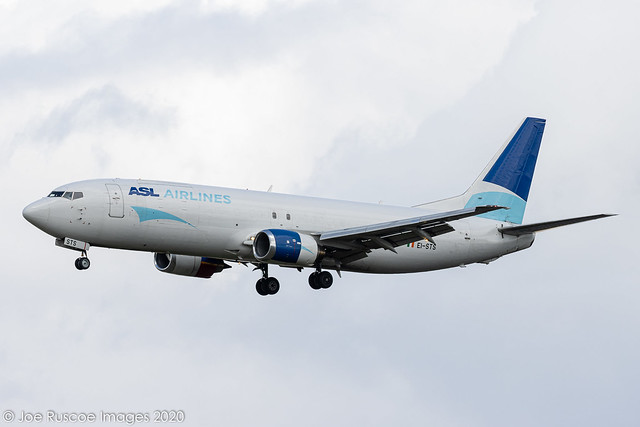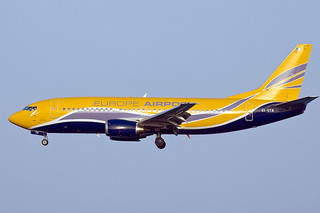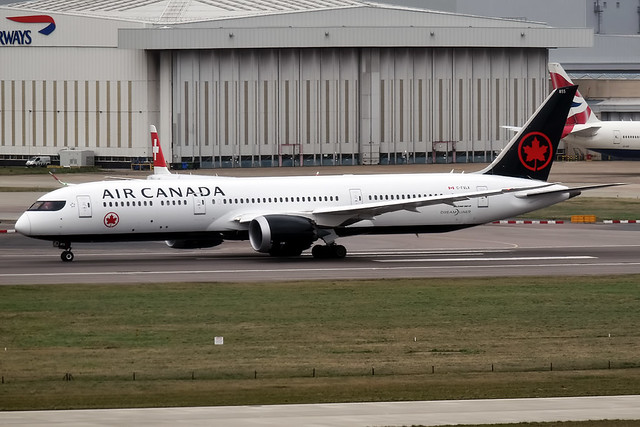Air Contractors A30B at Bratislava on Nov 16th 2012, nose gear collapse on landing, runway excursion
Last Update: September 9, 2013 / 15:20:07 GMT/Zulu time
Incident Facts
Date of incident
Nov 16, 2012
Classification
Accident
Cause
Runway excursion
Airline
Air Contractors
Aircraft Registration
EI-EAC
Aircraft Type
Airbus A300
ICAO Type Designator
A30B
Improper installation of one or more rings at the shimmy damper's axle, failing to preventing the axle's nut to unscrew. Due to the unscrewing and separation of the nut the nose wheel's steering capability was lost. With the axle freed the nose gear began to wobble causing the aircraft to veer to the left until the aircraft exited the runway and collided with the wall of a concrete access hole to the runway's wiring for lighting.
The runway excursion is thus attributed to the non-detected incorrect re-assembly of the shimmy damper of the nose gear.
Contributing to the incorrect assembly was the lack of clear and detailed textual description of the correct assembly in the maintenance manual, although a detailed schematics was available.
The collapse of the nose gear was caused by the collision with the concrete manhole.
Contributing to the nose gear collapse was the lack of regulations requiring that objects near runways or stopways should be designed to minimize damage to aircraft in case of a runway/stopway excursion.
The BEA reported that the aircraft performed a fully stabilized ILS approach to runway 22 of Bratislava with the captain being pilot flying. The aircraft touched down 700 meters past the runway threshold with medium autobrakes activating, the reversers were deployed. Six seconds after main gear touchdown the nose gear touched down, the crew immediately felt increasing vibrations, reverse thrust is being applied. At 85 KIAS the reversers are stowed, the vibrations still gradually increase and the aircraft begins to veer left. The crew applied maximum manual braking and attempted to counter the yaw by applying right rudder, then nose wheel steering however to no avail. The events unfolded so quickly that the captain did not think about using asymmetric braking. The aircraft exited the runway at 45 knots over ground, collides with the concrete structure of an access hole to the runway's lighting wiring and comes to a stop a few dozen meters further with the nose gear collapsed. The aircraft travelled over a distance of about 400 meters from the begin of vibrations to the final position.
The BEA reported that the washer (painted red) was mounted incorrectly, namely backwards, so that it could not make contact with the nut thus permitting the nut to unscrew itself and separate (editorial note: you'll need to look very carefully onto the sketch below to detect the difference of the front- and backside of the washer).
The BEA reported that the nose gear had been mounted on the aircraft in May 2012, the aircraft underwent last examination on Oct 21st 2012, then did 40 flight hours and 37 flight cycles until the accident flight.
The BEA reported that two similiar events had happened prior to the accident, one in 2008 in Vietnam on an A306 and one in 2009 in Pakistan on an A310. In both cases the aircraft remained on the runway, the occurrences were thus not investigated by the relevant Civil Aviation Authorities or investigation bodies.
Incident Facts
Date of incident
Nov 16, 2012
Classification
Accident
Cause
Runway excursion
Airline
Air Contractors
Aircraft Registration
EI-EAC
Aircraft Type
Airbus A300
ICAO Type Designator
A30B
This article is published under license from Avherald.com. © of text by Avherald.com.
Article source
You can read 2 more free articles without a subscription.
Subscribe now and continue reading without any limits!
Read unlimited articles and receive our daily update briefing. Gain better insights into what is happening in commercial aviation safety.
Send tip
Support AeroInside by sending a small tip amount.
Related articles
Contractors B734 at Shannon on Sep 22nd 2019, cargo door indication
An Air Contractors Boeing 737-400 freighter, registration EI-STS performing freight flight AG-2 from Shannon (Ireland) to East Midlands,EN (UK), was…
Air Contractors B734 at East Midlands on Apr 29th 2014, parts of left main gear failed
An Air Contractors Boeing 737-400 freighter, registration EI-STD performing freight flight QY-1748 from Paris Charles de Gaulle (France) to East…
Air Contractors B733 near Cork on Jun 24th 2014, suspected fuel leak
An Air Contractors Boeing 737-300, registration EI-STA performing flight AG-419J from Belfast International,NI (UK) to Barcelona,SP (Spain) with 150…
Air Contractors AT42 at Glasgow on Feb 22nd 2012, approached stall, oversped flaps and approached stall again during ILS approach
An Air Contractors Avion de Transport Regional ATR-42-300, registration EI-FXA performing freight flight AG-2CL from Newcastle,EN to Glasgow,SC (UK)…
Air Contractors B733 near Dublin on Jun 15th 2013, burning smell in cabin
An Air Contractors Boeing 737-300, registration EI-STA performing flight AG-427J from Dublin (Ireland) to Dubrovnik (Croatia), was climbing out of…
Newest articles
EAT Leipzig A306 at Brussels on Nov 26th 2020, rejected takeoff above V1 due to difficulties becoming airborne
An EAT Leipzig Airbus A300-600 freighter on behalf of DHL, registration D-AEAI performing flight QY-841 from Brussels (Belgium) to Vitoria,SP…
Canada B789 at Auckland on Jan 13th 2026, unusual odour
An Air Canada Boeing 787-9, registration C-FVLX performing flight AC-40 from Auckland (New Zealand) to Vancouver,BC (Canada) with 269 passengers and…
Subscribe today
Are you researching aviation incidents? Get access to AeroInside Insights, unlimited read access and receive the daily newsletter.
Pick your plan and subscribePartner

ELITE Simulation Solutions is a leading global provider of Flight Simulation Training Devices, IFR training software as well as flight controls and related services. Find out more.
SafetyScan Pro provides streamlined access to thousands of aviation accident reports. Tailored for your safety management efforts. Book your demo today
AeroInside Blog
Popular aircraft
Airbus A320Boeing 737-800
Boeing 737-800 MAX
Popular airlines
American AirlinesUnited
Delta
Air Canada
Lufthansa
British Airways



